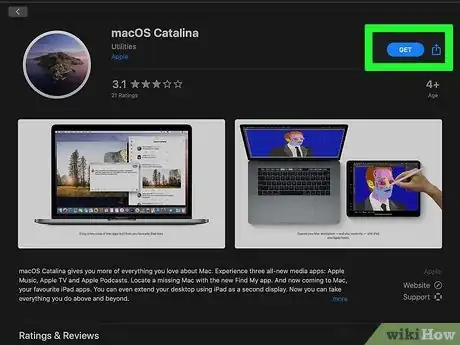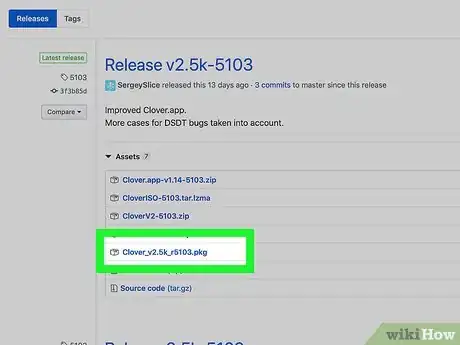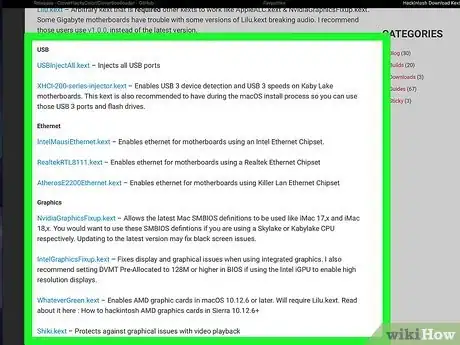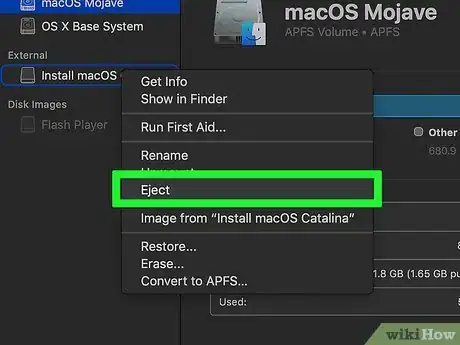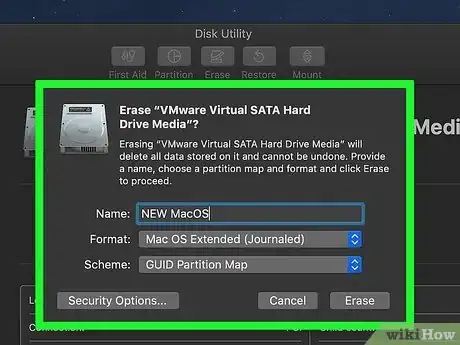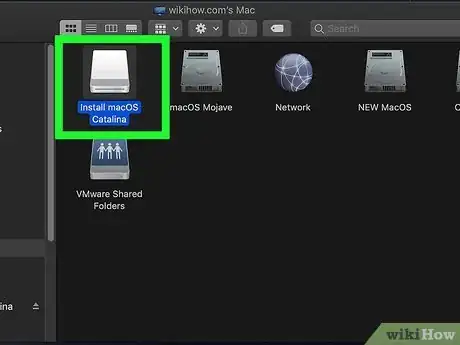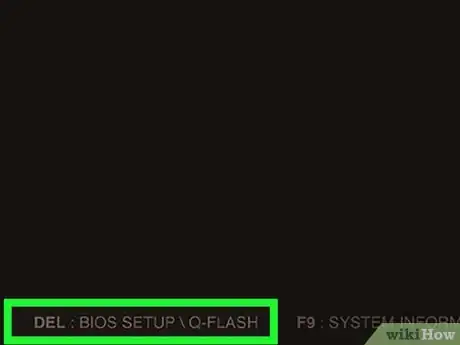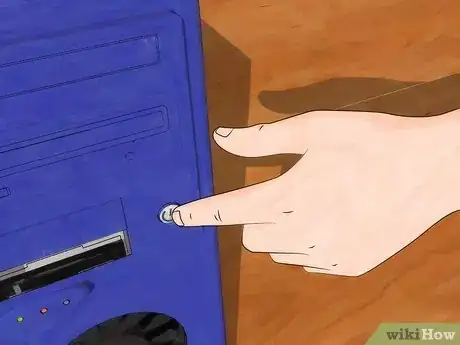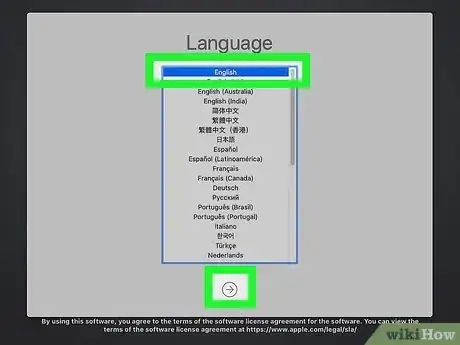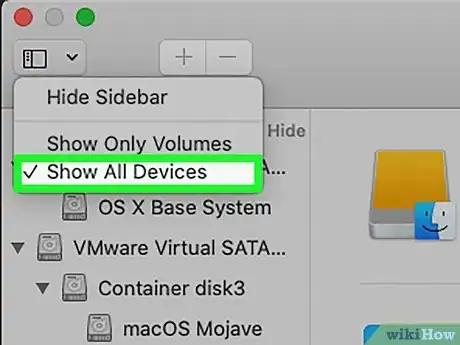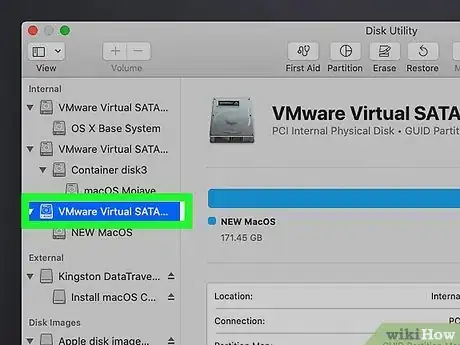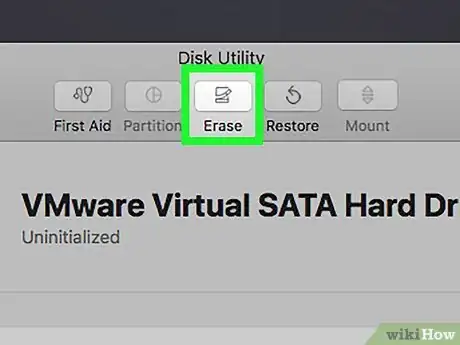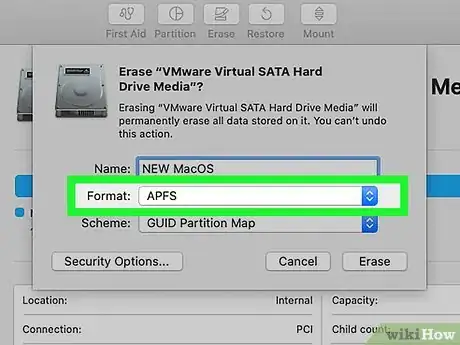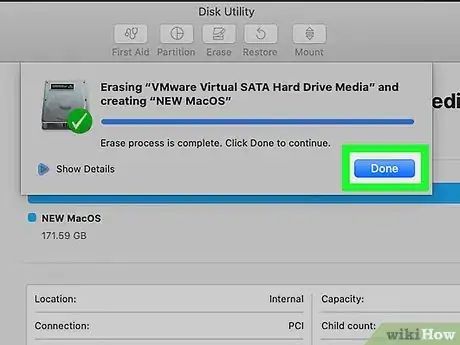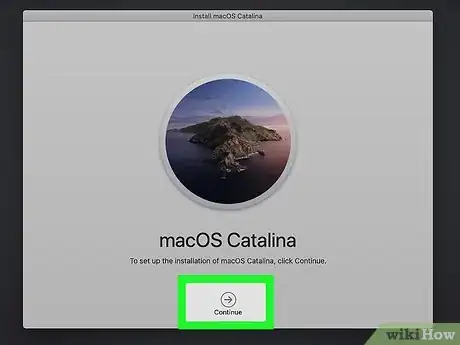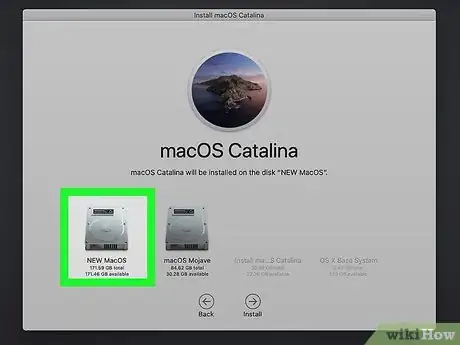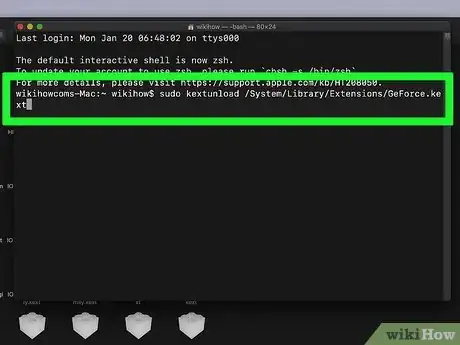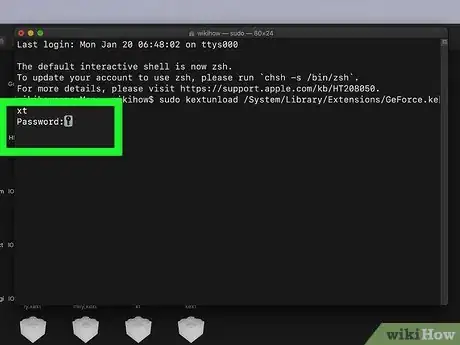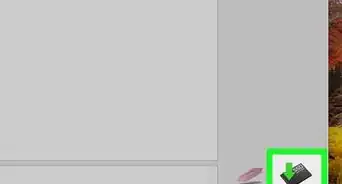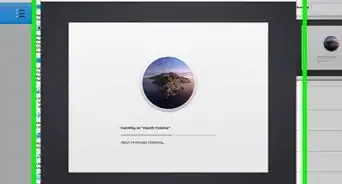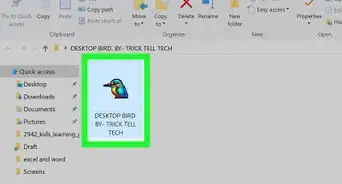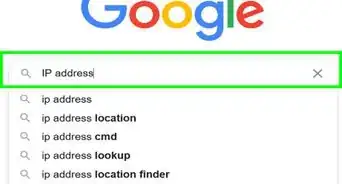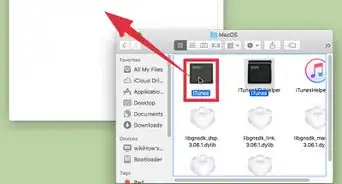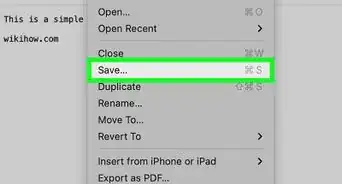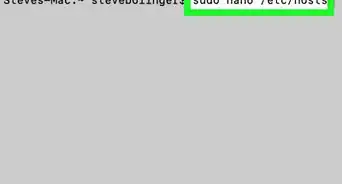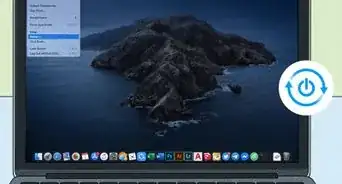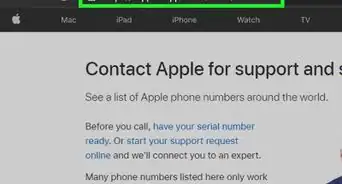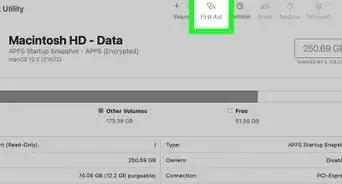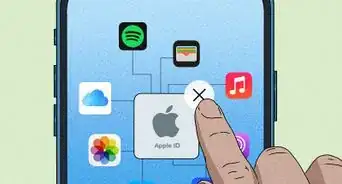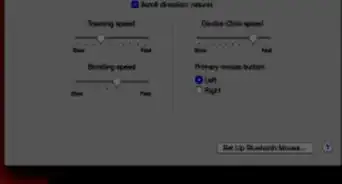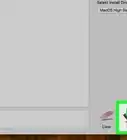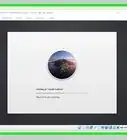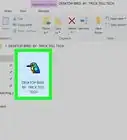This article was co-authored by wikiHow staff writer, Travis Boylls. Travis Boylls is a Technology Writer and Editor for wikiHow. Travis has experience writing technology-related articles, providing software customer service, and in graphic design. He specializes in Windows, macOS, Android, iOS, and Linux platforms. He studied graphic design at Pikes Peak Community College.
This article has been viewed 96,578 times.
Learn more...
A Hackintosh is a non-Apple branded PC that runs the Apple macOS operating system. To do this, you will need a compatible non-apple PC, as well as access to a Mac computer. You will also need a USB flash drive to use as an install drive. Warning: There is no guarantee that a non-Apple PC will be able to run Mac OS, and there will likely be certain features that do not work. Building a Hackintosh is also a violation of Apple's End User License Agreement and the Digital Millennium Copyright Act. This wikiHow teaches you how to build a Hackintosh. Proceed at your own risk.
Things You Should Know
- You can download the latest version of macOS onto any Mac to create an installable image of macOS on a USB drive.
- After creating the image, you'll need to add a bootloader so it's bootable on your PC.
- After installing macOS, you can install kexts (drivers) to fix problems with incompatible hardware.
Steps
Creating an Install Disk
-
1Download MacOS Catalina on a Mac. You'll need access to a Mac to download macOS Catalina. You can download macOS from the App Store on a Mac computer. Once it finishes downloading, close the installer. You do not need to install macOS.
- Open the App Store and search macOS
- Click Download below macOS Catalina.
- Close out of the macOS installer when it appears.
-
2Insert a USB flash drive. You need a USB flash drive that is 16GB or larger. Make sure there are no files you want to keep on the Flash drive.Advertisement
-
3Open Disk Utility. Use the following steps to open Disk Utility:
- Click the Mac Spotlight magnifying glass icon in the upper-right corner of the desktop.
- Click Type "disk utility.app" in the search bar and press Enter.
-
4Format the USB drive. Use the following steps to format the USB drive in Disk Utility:
- Select the USB drive in the sidebar to the left in Disk Utility.
- Click Erase at the top of Disk Utility.
- Type "USB" next to "Name"
- Click Erase.
-
5
-
6Enter the command to create an install disk in the terminal and press ↵ Enter. You will then be asked to enter the Mac user password. This creates a USB install drive from the macOS Catalina download. The command is as follows:[1] sudo /Applications/Install\ macOS\ Catalina.app/Contents/Resources/createinstallmedia --nointeraction --volume /Volumes/USB/
-
7Install Clover bootloader. Warning: Make sure to select the USB drive as the install location. If you install it on your Mac, you risk damaging your Mac bootloader. Use the following steps to install the Clover bootloader:[2]
- Navigate to https://github.com/CloverHackyColor/CloverBootloader/releases in your web browser.
- Click the latest version of the Clover ".pkg" file ("Clover_v2.5k_r5098.pkg" as of November 2019).
- Open the .pkg file in your Downloads folder.
- Click Continue twice.
- Click Change Install Location (Important)
- Select the USB flash drive and click Continue. (Important).
- Click Customize. (if a custom install is required).
- Ensure Recommended Drivers is checked.
- Check any additional drivers needed for the computer you want to install macOS on.
- Click Install
-
8Download the "FakeSMC.kext" file. You only need the FakeSMC.kext file. You don't need any of the other files included in the download. Use the following steps to download the FakeSMC.kext file:
- Navigate to https://bitbucket.org/RehabMan/os-x-fakesmc-kozlek/downloads/ in a web browser.
- Click the latest version of RehabMan-FakeSMC.
- Open the zip file.
- Click and drag the "FakeSMC.kext" file to your desktop.
-
9Download additional kext files needed for your system. You need to know what hardware is on the computer you want to install macOS on. Use the following steps to download additional Kext files needed for your system.
- Go to https://hackintosher.com/downloads/kexts/ in a web browser.
- Click the download link for kext files needed for your hardware.
- Open the zip file.
- Click and drag the Kext file to your desktop.
-
10Navigate to the kext folder of the USB drive in the Finder . The Finder has an icon that resembles a blue and white smiley face. Open the Finder in the the Dock at the bottom of the screen. Use the followings steps to navigate to the appropriate folder on the USB drive:
- Open the Finder.
- Click EFI in the sidebar to the left.
- Open the EFI folder.
- Open the Clover folder.
- Open the Kext folder.
- Open the Other folder.
-
11Drag and drop the kext files into the "Other" folder. After navigating to the "Other" folder in "Kext" on the USB drive, drag and drop the kext files you downloaded from the desktop into the folder.
-
12Eject the USB drive. Your USB drive is now ready. Click the Eject button to eject the USB flash drive and then remove it from the Mac.
Preparing to Install macOS on a Hackintosh
-
1Create a separate partition on your main drive. It is highly recommended that you create a separate partition for the macOS installation. Installing macOS on your main drive may cause permanent problems if the installation doesn't work properly.
-
2Insert the USB install drive. Use a free USB port on the computer you want to install macOS Catalina to insert the USB drive.
-
3Boot into the BIOS. The way you boot into the BIOS is different on different computers. Some computers require you to press one of the functions keys while it boots up. Check the owner's manual or manufacturers' website to find out how to boot into the BIOS on your computer.
-
4Select Load Optimized Defaults and reboot the BIOS. This is usually under the "Save & Exit" menu. Select this option and then select Save & Exit and reboot the BIOS.
- If you cannot find this option in the BIOS, disregard and continue.
-
5Make the following changes to the BIOS. Each BIOS menu is different. Look for the following options in the BIOS menu and make the appropriate changes. If you cannot find these options, disregard and continue:
- Select Profile 1 or Enable under "Extreme Memory Profile" in "Advanced Memory Settings".
- Disable Secure Boot. [3]
- Disable Fast Boot.
- Disable Super IO Configuration.[4]
- Set it to boot from "Other OS" next to "Windows 8/10 Features".
- Set it to boot from "BIOS and Legacy".
- Enable "XHCI Hand-off' under "USB Configuration".
- Disable Intel's VT-d technology under the "Chipset" menu.
- Set USB drive as the default boot drive.
-
6Reboot your computer. After you have made all the necessary changes to the BIOS, reboot your computer and allow your computer to boot from the USB drive with macOS installed on it.
Installing macOS on a Hackintosh
-
1Boot from the UEFI version of the USB flash drive. It's in the list of Boot drives. Your USB flash drive may be listed alongside a UEFI version of your USB flash drive. Select the UEFI version. This opens the Clover bootloader.
-
2Press O when Clover opens. This opens the Options menu.
-
3Type -lilubetaall in the "Boot args" line and press ↵ Enter. The "Boot Args" line is at the top of the list.
-
4Select Return. It's at the bottom of the Options menu. Navigate to this option at the bottom of the list and press the "Enter" key. This returns to the previous screen.
-
5Select the macOS Catalina option. This boots macOS Catalina from the USB drive.
-
6Select your language and click the arrow icon. The first page of the macOS Catalina installation screen asks you to select your language. Select your language and click the arrow icon to continue.
-
7Click the Disk Utility option. It has an icon that resembles a disk drive with a stethoscope.
-
8Select Show all devices. It's in the View menu at the top of the screen. This displays all disks and partitions.
-
9Select the partition you want to install macOS on. It's in the sidebar to the left.
- Once again, it is recommended that you NOT install macOS on your main hard drive. Select a partition to install macOS on.
-
10Click Erase. It's the middle button at the top of the Disk Utility window.
-
11Type a name for the partition. You can name the partition with macOS "Hackintosh", "macOS", "macOS Catalina" or anything you want.
-
12Select APFS under "Format". It's in the drop-down menu next to "Format".
-
13Select Erase. It's in the lower-right corner of the windows. This formats the partition you selected.
-
14Click Done and close Disk Utility. After Disk Utility is finished formatting, click Done and then click the red X icon to close Disk Utility.
-
15Install macOS. After you finished formatting the partition you want to install macOS on, use the following steps to install macOS.
- Select "Install macOS" and click Continue.
- Click the arrow icon to continue.
- Click Agree to agree to the terms and conditions.
- Select the partition you want to install macOS on.
- Click Install.
-
16Boot from the USB flash drive. After macOS is installed you can boot into macOS using the USB flash drive and selecting the UEFI version of the flash drive. After the installation is complete, reboot your computer and boot into macOS. Follow the on-screen instructions to complete the setup process.
Installing Kext Files on MacOS
-
1Drag and drop the kext files to your desktop. If you have kext files installed on your macOS install disk, you can drag and drop them to your desktop from the install drive. You can also download any kext files you need from a repository]. Use the following steps to navigate to your kext files on the install drive.
- Insert the USB macOS installer.
- Open the Finder.
- Click EFI in the sidebar to the left.
- Open the EFI folder.
- Open the Clover folder.
- Open the Kext folder.
- Open the Other folder.
- Drag and drop the kext files to your desktop.
-
2
-
3
-
4Type the following command in the terminal: sudo kextunload /System/Library/Extensions/[filename.kext] and press ↵ Enter.. Replace "filename.kext at the end fo the command with the actual file name you are trying to install (i.e. sudo kextunload /System/Library/Extensions/realtekRTL8100.kext).
-
5Enter your macOS password and press ↵ Enter. You'll need to enter your password in order to install kext files on macOS. Enter the password you use to sign in to your Hackintosh and press the Enter key.[5]
-
6Repeat for all kext files. You'll need to repeat this command for all kext files you want to install.
Warnings
- Building a Hackintosh is a violation of Apple's End-User License Agreement (EULA) as well as the Digital Millennium Copyright Act (DMCA). It could potentially cost hundreds of thousands of dollars in legal fees if you are found out.[6]⧼thumbs_response⧽
- There is no guarantee that macOS will work on a non-Apple computer.⧼thumbs_response⧽
- Many macOS features will not be available on a Hackintosh. Items purchased from iTunes, Apple Music, Apple TV and other Apple stores may not be available on a Hackintosh.⧼thumbs_response⧽
References
- ↑ https://www.youtube.com/watch?v=ekp8w6pel84
- ↑ https://www.youtube.com/watch?v=ekp8w6pel84
- ↑ https://www.tfir.io/build-a-video-editing-system-with-hackintosh-gtx-1070-ti-2/
- ↑ https://www.youtube.com/watch?v=WpoOVskAmc4
- ↑ https://www.applegazette.com/mac/install-kexts-hackintosh-vanilla-macos/
- ↑ http://c4sif.org/2012/10/are-hackintosh-computers-legal-no-but-only-because-of-copyright/
About This Article
1. Download macOS Catalina on a Mac, but do not install it.
2. Insert a USB flash drive and open Disk Utility.
3. Format the USB drive and name it "USB".
4. Open the terminal and enter "sudo /Applications/Install\ macOS\ Catalina.app/Contents/Resources/createinstallmedia --nointeraction --volume /Volumes/USB/"
5. Download and install Clover bootloader from https://github.com/CloverHackyColor/CloverBootloader/releases
6. Download fakeSMC.kext from https://bitbucket.org/RehabMan/os-x-fakesmc-kozlek/downloads/.
7. Download any additional kext files your system needs from https://markwithtech.com/Thread-Common-Kexts-and-other-Downloads-for-Hackintosh.
8. Drag and drop the kext files to /Volumes/EFI/CLOVER/kexts/Other/ on the USB drive.
9. Eject the USB drive and remove it.
10. Partition a drive you want to install macOS on on a non-Apple computer.
11. Boot from the USB drive with macOS installed on it and select the UEFI version (you may need to make changes to the BIOS).
12. Format a partition for macOS using Disk Utiltiy.
13. Select Install macOS and wait for macOS to finish installing.
14. Reboot from the USB drive and select the UEFI flash drive.
15. Follow the instructions to set up macOS.
